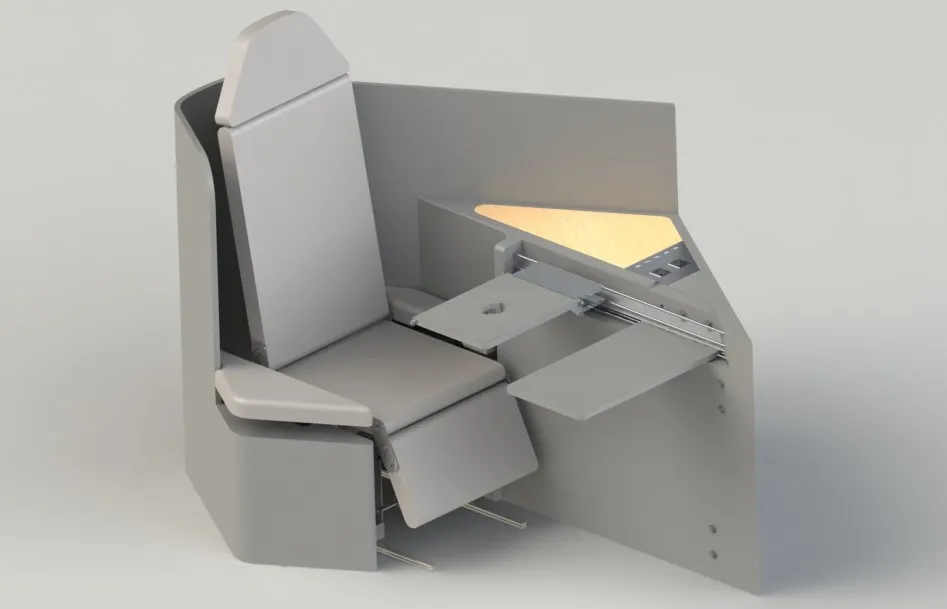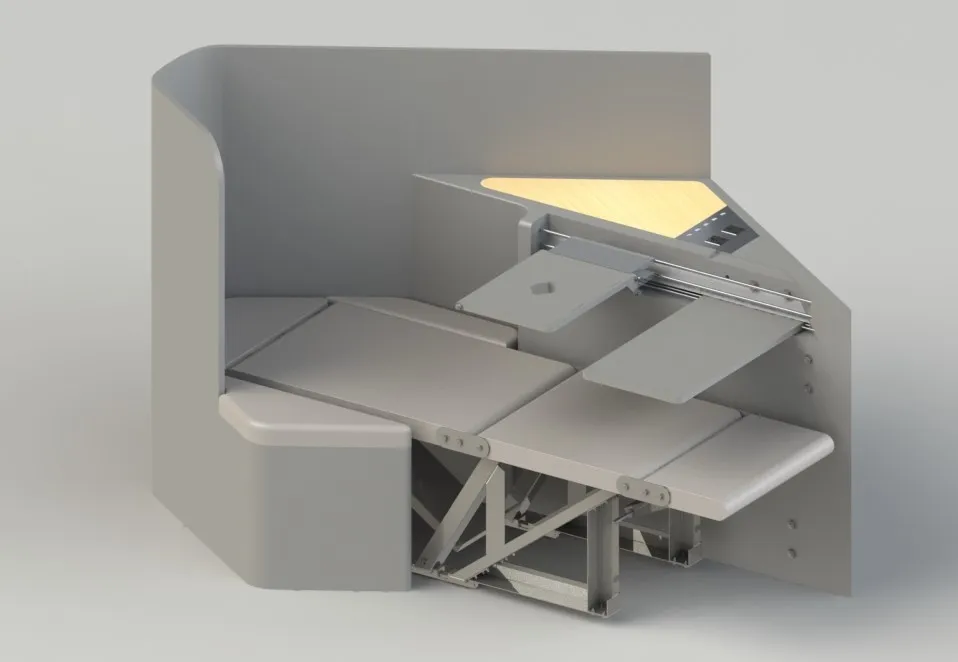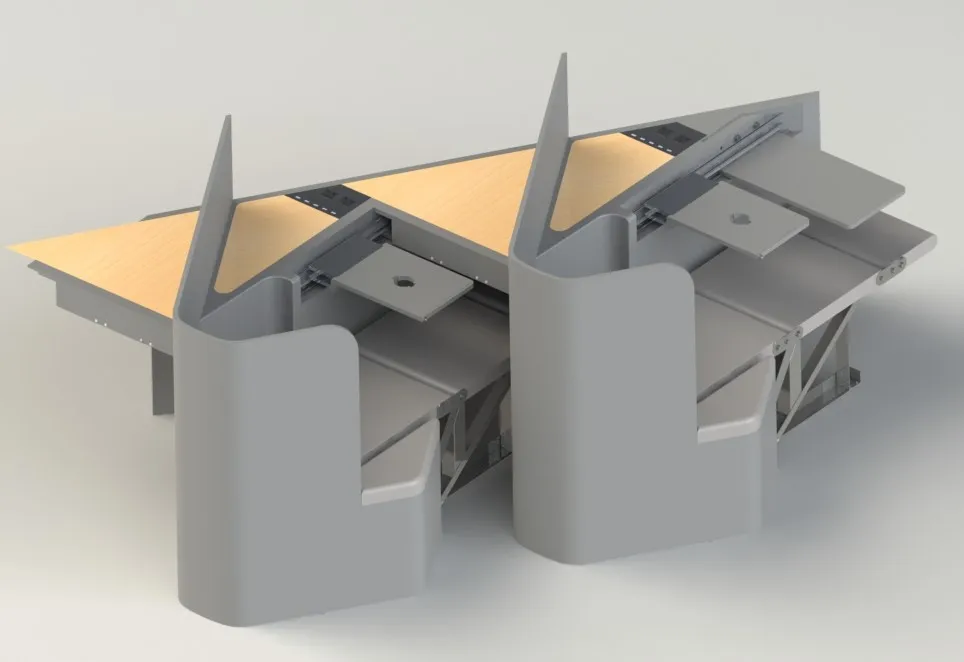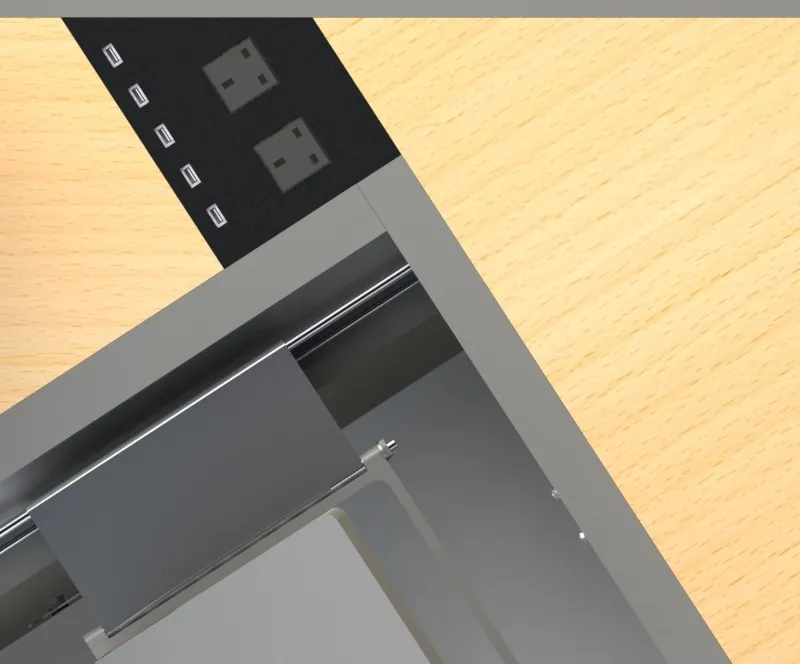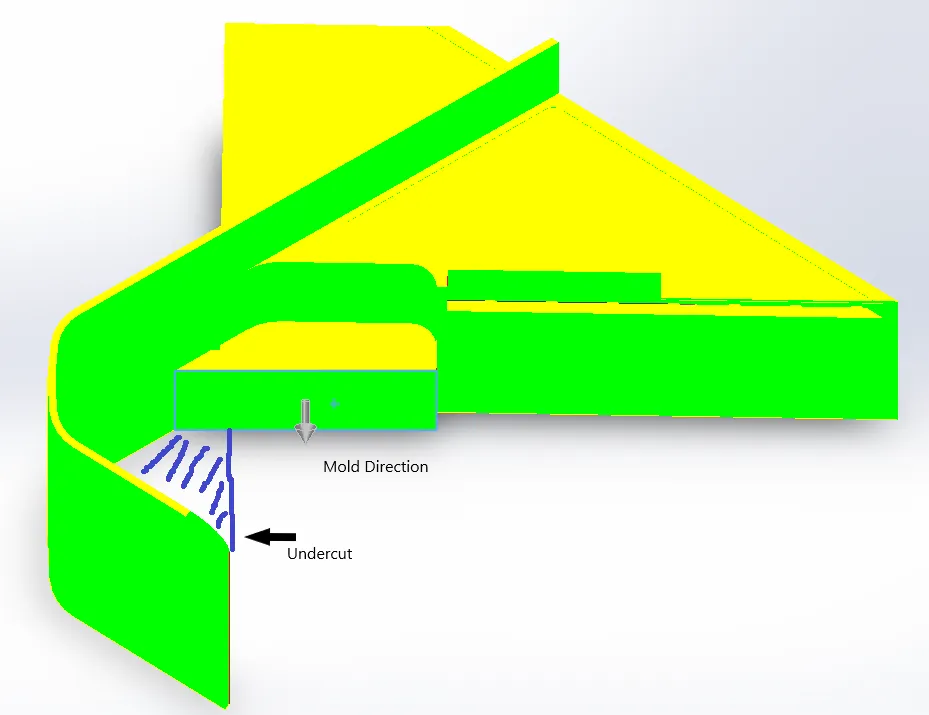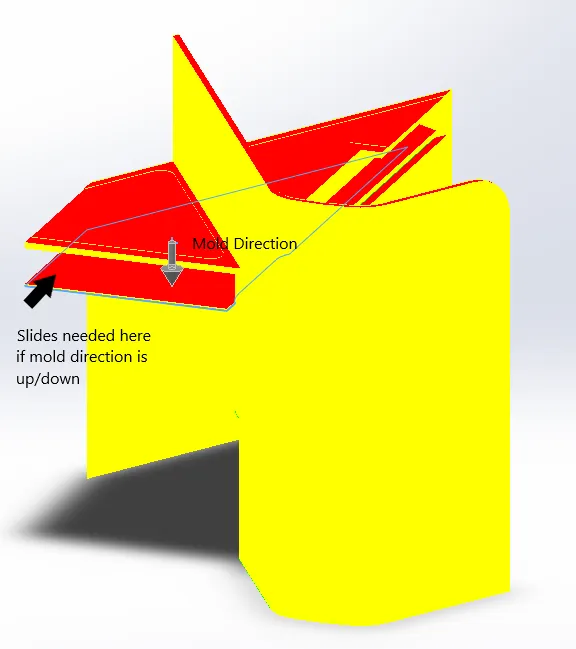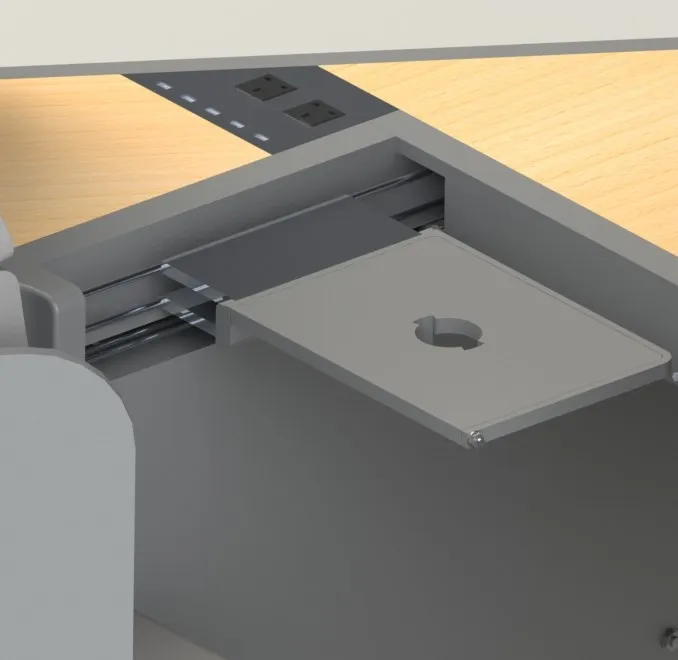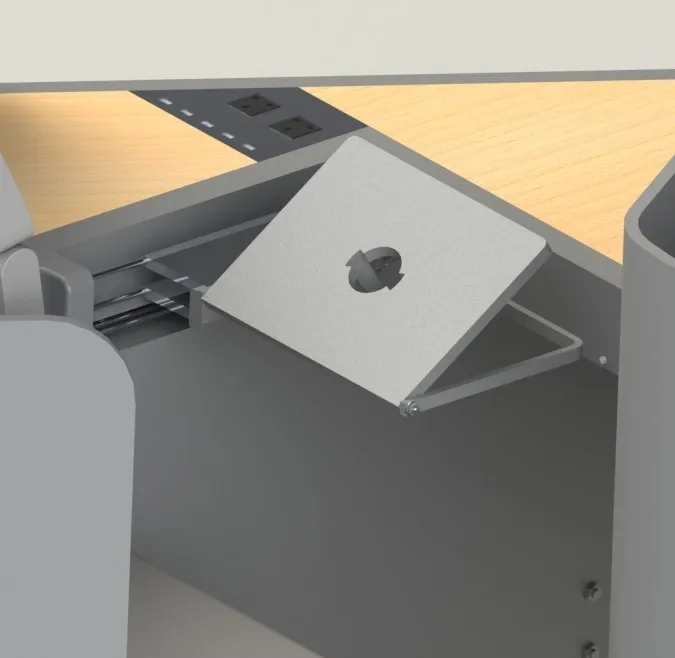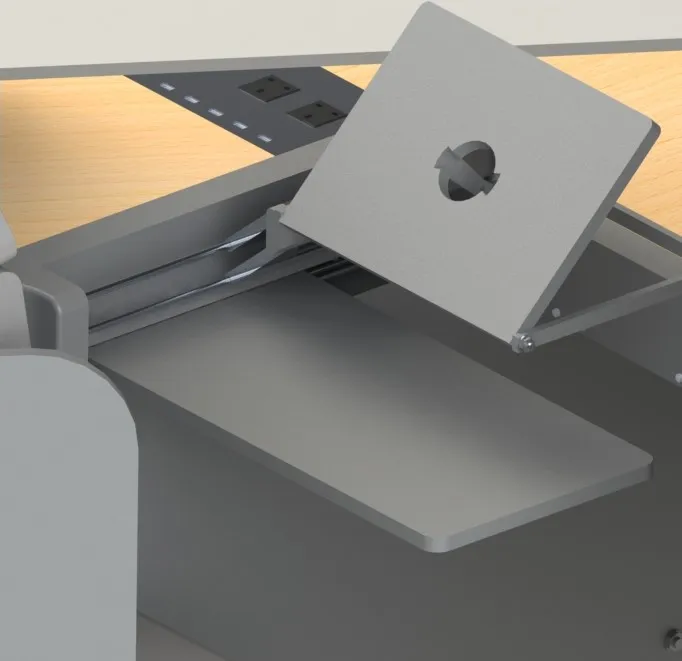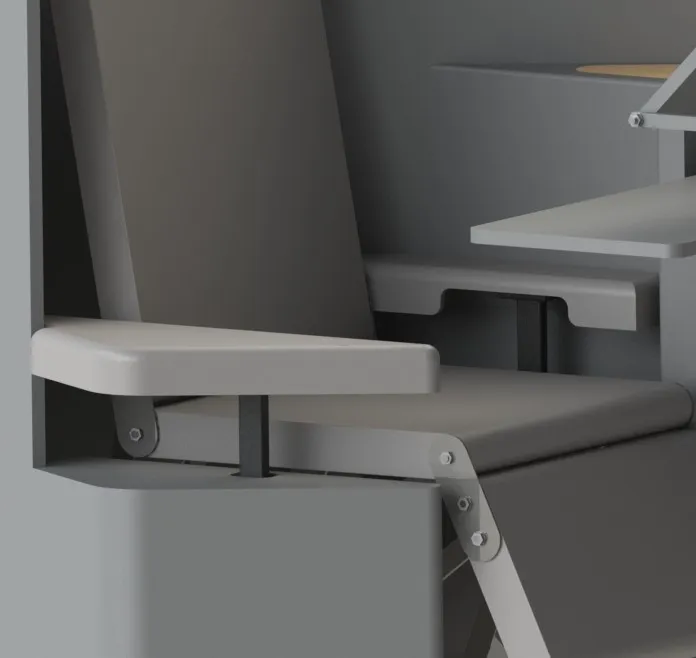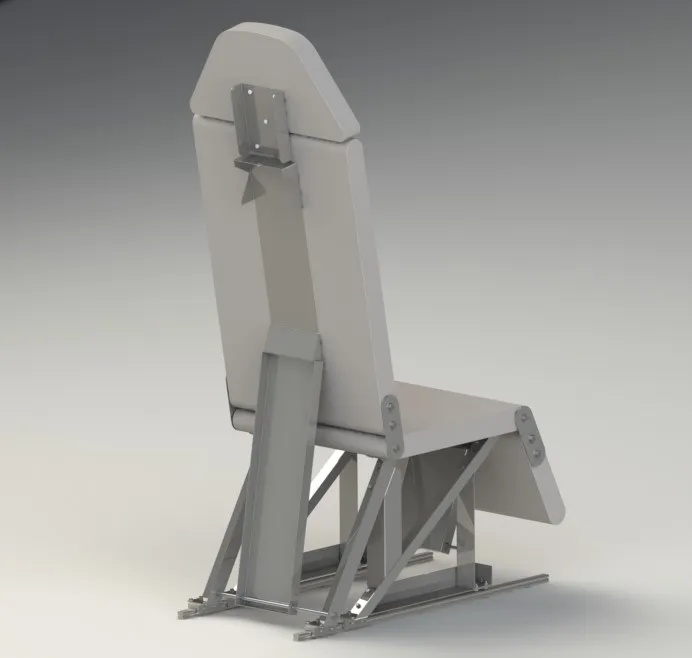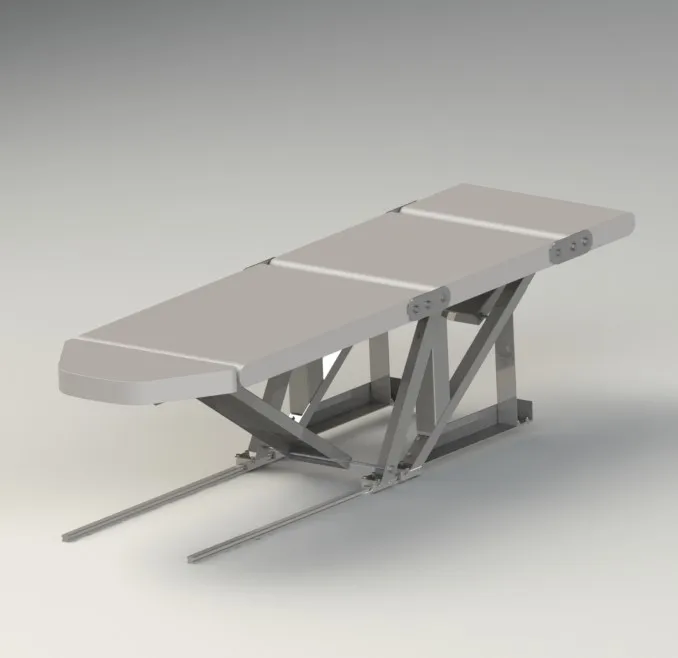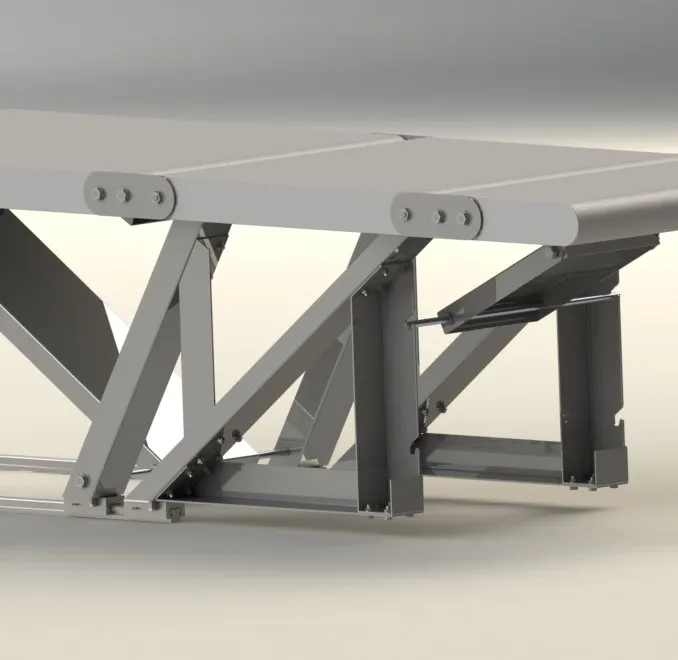Business Class Airline Seating
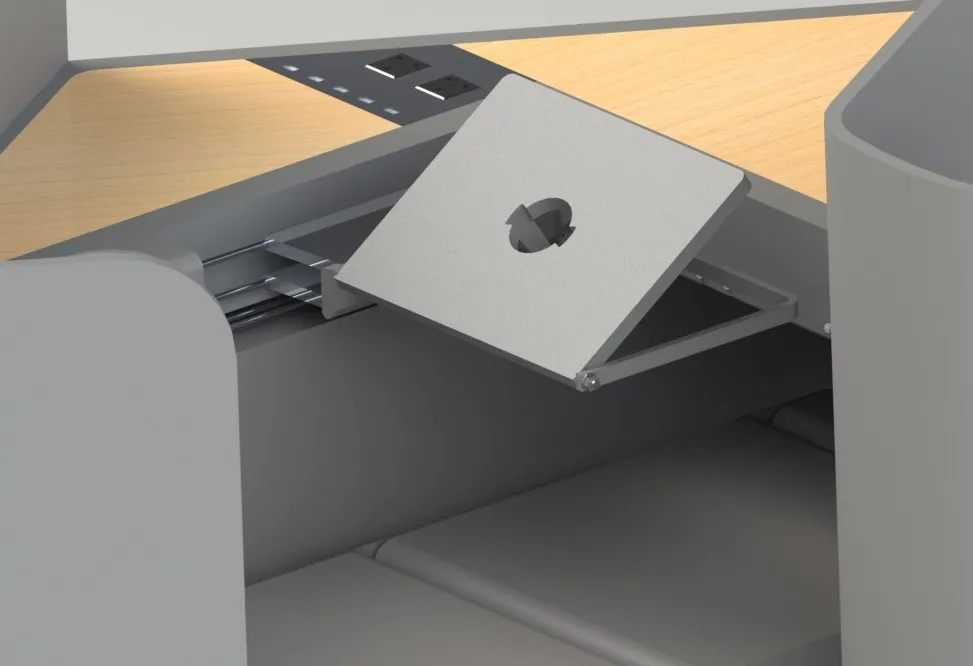 \
\
Description
Adhia Investment Advisors, Inc
August 2019 - October 2019
My role in this project was to take an industrial design concept of business class seating in an aircraft and take it towards the direction of manufacturing through the development of a prototype.
Problem
The overall goal of this project was to take an industrial design concept developed by Colombo Design Studio and develop a physical prototype of it that would be a closer resemblance to the manufactured end-product.
The first obstacle identified in this process was the fact that the wall seperating part of the assembly was given as one entire piece. This would prove to be problematic since the intended method of manufacturing was injection molding. This evidently meant that the industrial designers
who conceived this design did not take into consideration Design for Manufacturing methodologies. The images below demonstrate injection mold issues depending on the intended mold direction.
As part of this project I was also required to:
- choose appropriate materials according to the manufacturing method of each part
- create a mechanism for a multi-angle laptop/tablet surface mount
- source USB and mains power supply parts and included them in the design
- provide a mechanism for height adjustable armrests
- design a mechanism to enable the seat to go from up-right to flat-lying, ensuring that the passenger enjoys a good night sleep.
Solution
In order to solve the undercut issue that arose due to the part being one piece, I decided to split the part up into pieces that could easily be manufactured by injection molding and thermoforming processes.
The materials selected for this product were chosen from BASF's selection of aerospace materials in order to comply with world-wide aircraft material standards.
By sourcing a suction cup from RAM®, a mount was created on the laptop swiveling mechanism to enable passengers to securely mount there device and be able to adjust the angle and height of it's position. The renderings below demonstrate 3 possible configurations depending on the passengers needs.
As can also be seen by the renderings above, USB and mains power components were sourced and included in the design.
Manual height adjustment of the armrests was achieved by sourcing adjustable armrest mechanisms from computer chair suppliers and creating a hybrid solution in order to stay within the industrial design intent.
For prototyping purposes, a seat adjustment mechanism was created out of sheet metal and CNC rails to check for seat clearances and passenger usability.
